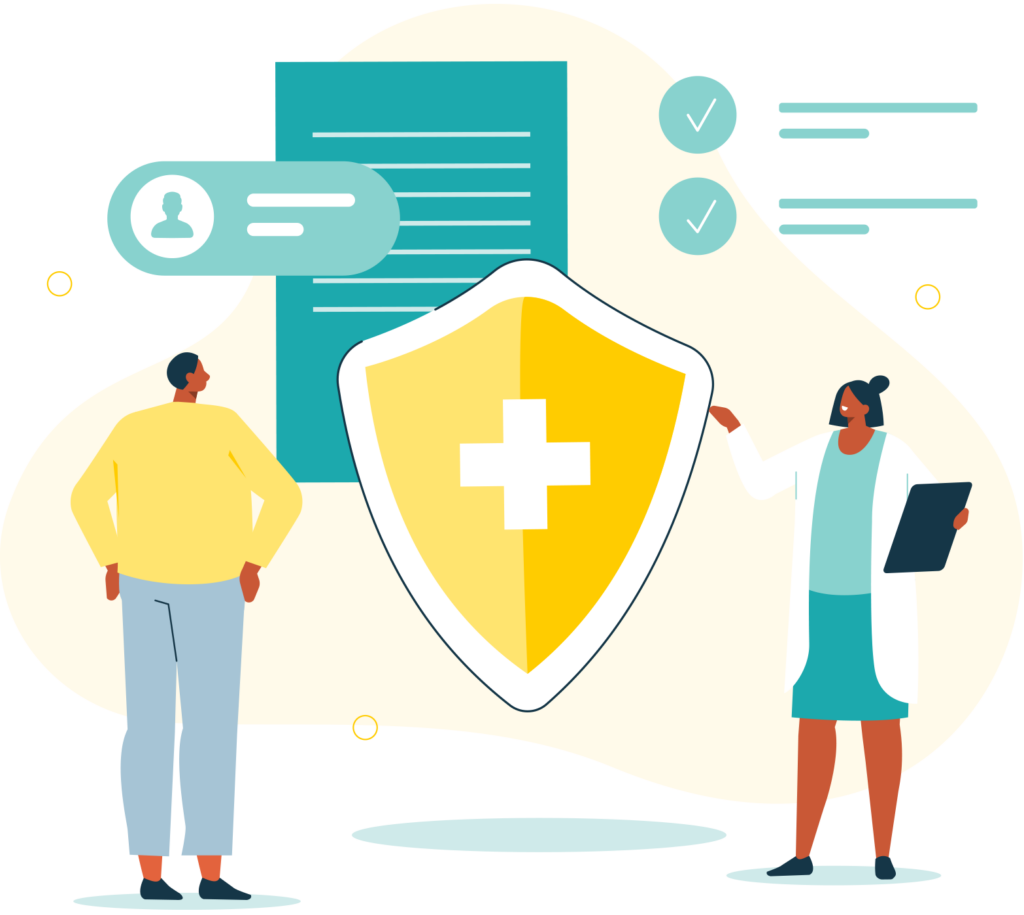Signs of Vicodin abuse may initially begin with taking more pills than prescribed. Innocent enough, but addicts begin to build a tolerance to the drug and begin taking more pills to achieve not only the desired pain relief but also the euphoric feelings it offers. Without positive and healthy coping mechanisms, it is very easy to fall victim to the drug and become addicted. If you or a loved one has been prescribed Vicodin for pain and have developed intense cravings for more of the drug, experienced impaired judgment, or feel your lifestyle slipping away, you may be addicted and need help. Vicodin is one of the most frequently abused opioids in the U.S.
What is Vicodin?
Vicodin is an opioid painkiller. Both hydrocodone and acetaminophen are combined in the making of Vicodin which works as a central nervous system depressant. Prescribed to alleviate moderate to severe chronic pain, the effects achieve a sense of relaxation, contentment, and a sense of well-being as well as relieving pain. Signs of Vicodin abuse begin when tolerance builds to the drug and more than the prescribed amount is ingested.
The signs of Vicodin abuse include the dangerous euphoric effects that Vicodin induces. The patient wants more of those good feelings. It’s a given that Vicodin does its job in alleviating pain, but the draw to experience the euphoria masks the true intention of the drug and begins to fuel addiction. Once addicted, the user cannot tolerate life without it. All ability to think clearly is affected, and control is lost.
What are the Signs of Vicodin Abuse?
The signs of Vicodin abuse manifest in behavioral, physical, cognitive, and psychosocial signs and symptoms. Initial signs may be subtle. As addiction continues the various signs and symptoms become more distinct and recognizable. Hallmark changes occur the further the addict gets involved in their addiction. It is important for the addict to be honest and reach out for help if they feel this is describing their own situation.
Signs of Vicodin abuse can include:
Behavioral symptoms
- Changes in behaviors surrounding work, school, and relationships
- Less engagement with family and close friends
- Demonstrations of frustration or anger in trying to get more Vicodin – doctor shopping
- Slurred speech
- Disregard for safety while taking Vicodin – driving high, handling machinery while taking the medication, risky behaviors
Physical symptoms:
- Habitual drowsiness
- Constricted pupils
- Jerky body movements or extremely slow motor skills
- Insomnia
Cognitive symptoms:
- Impaired judgment
- Difficulty concentrating and staying focused
- Memory problems
- Overwhelming cravings for the drug
- Thoughts of suicide
Psychosocial symptoms:
- Experiencing euphoria then apathy
- No interest in hobbies, friends or family
- Frequent mood shifts
Effects of Vicodin Addiction
Signs of Vicodin abuse can manifest in serious health issues. Vicodin affects the liver and causes damage and failure. Urinary tract issues sometimes occur, as does jaundice. Not only does Vicodin affect addicts physically, but there is also the toll it takes on family, work, and lifestyle. Vicodin addiction can destroy lifestyles causing serious relationship dysfunctions, disruption of work habits, focus and production, and financial stability can be hit hard.
The signs of Vicodin abuse are found with the following negative effects of the addiction:
- Disruption of lifestyle: occupational performance suffers, relationships become dysfunctional, and finances become negatively affected
- Withdrawal socially increased isolation
- Anorexia, oxygen deficiency in body tissue
- Liver damage
- Impaired vision, dry nose, and mouth
- Decreased gastrointestinal activity
- Mental illness as a co-occurring issue
- Suicidal thoughts
Vicodin Withdrawal Symptoms and Timeline
Frequently consuming Vicodin can cause withdrawal symptoms if drug ingestion stops. Withdrawal symptoms are a sign of Vicodin abuse. The body tries to adjust to the lack of Vicodin, and the results can be some of the following symptoms. Withdrawal symptoms can begin anywhere between eight to 24 hours after the last dose of Vicodin. Withdrawal symptoms can start feeling relieved in about seven days. Certain symptoms of Vicodin usage can stay in the body for a few weeks up to a few months.
The following withdrawal symptoms will occur when drug usage stops suddenly:
- Muscle aches, sweating, nausea
- Vomiting and diarrhea
- Chronic crying or uncontrollable flowing of tears
- Excessive yawning
- Fever
- Insomnia
- Dilation of pupils
- Dysphoric mood
Get Help for Vicodin Addiction
Recognizing the signs of Vicodin abuse is the beginning step in addressing the addiction. Making the decision to seek treatment to recover from Vicodin addiction is making a responsible effort to get help. Detox is imperative. Choosing a treatment center that offers medically managed and professionally monitored detox can help succeed with a solid plan to undertake sober living.
Residential rehab or a solid outpatient treatment program with individual therapy, group therapy, and possibly the addition of new types of holistic therapy describes a solid path for recovery. The most important aspect of the treatment process is a dedicated team who understands the signs of Vicodin abuse and can recognize through assessment the best-individualized plan for the addict. Family support is also very important.
Signs of Vicodin Abuse and Addiction in Texas
Sunrise Veterans Health in Texas offers treatment for Vicodin addiction. If you feel that you have developed an addiction and recognize the signs of Vicodin abuse described here, contact us. There are many opportunities on our website to call or inquire through email to ask your questions. The time to begin recovery is now. Make the decision, seek help, and let us help you in your journey to wellness.


